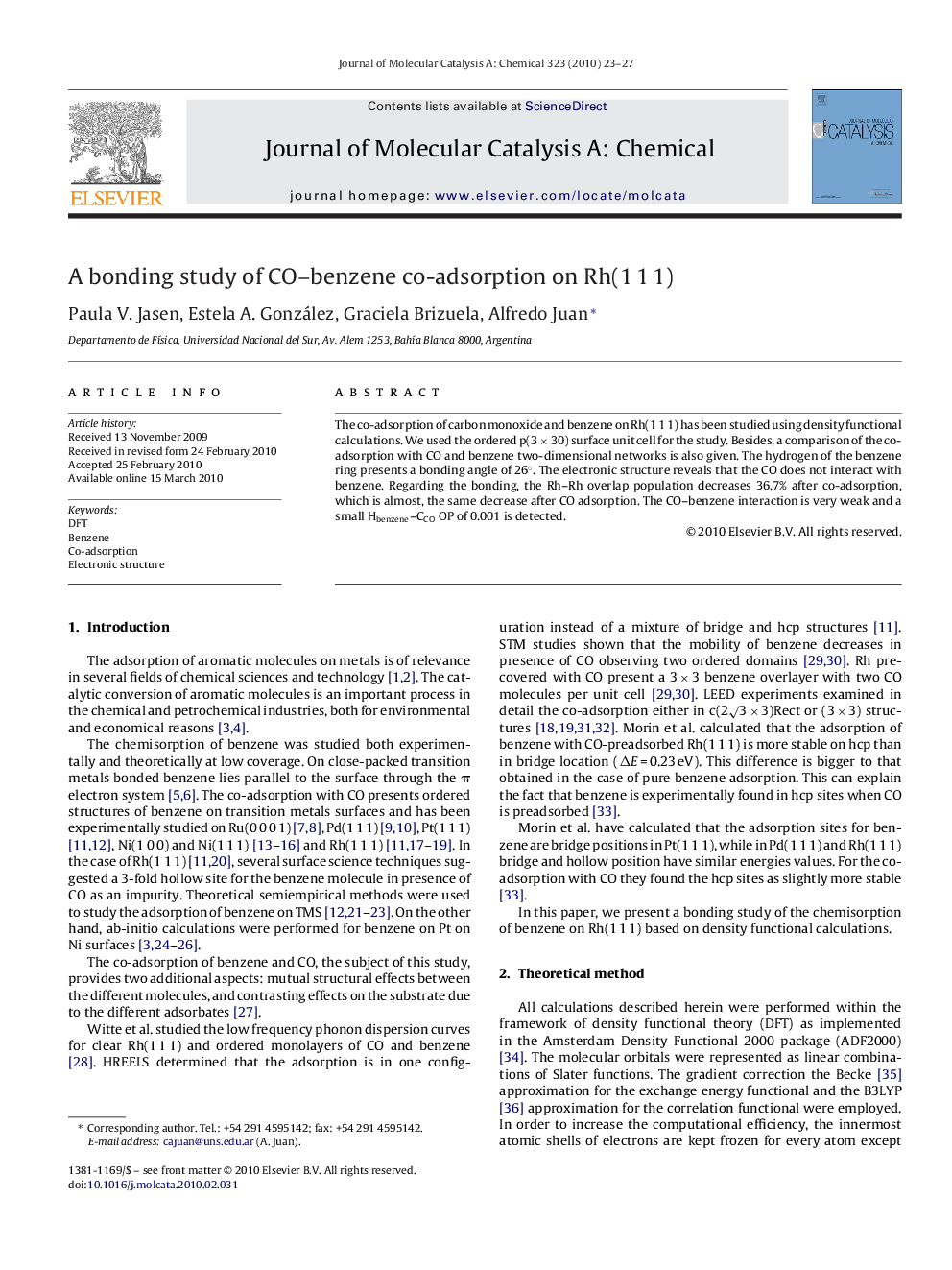| Article ID | Journal | Published Year | Pages | File Type |
|---|---|---|---|---|
| 66800 | Journal of Molecular Catalysis A: Chemical | 2010 | 5 Pages |
The co-adsorption of carbon monoxide and benzene on Rh(1 1 1) has been studied using density functional calculations. We used the ordered p(3 × 30) surface unit cell for the study. Besides, a comparison of the co-adsorption with CO and benzene two-dimensional networks is also given. The hydrogen of the benzene ring presents a bonding angle of 26°. The electronic structure reveals that the CO does not interact with benzene. Regarding the bonding, the Rh–Rh overlap population decreases 36.7% after co-adsorption, which is almost, the same decrease after CO adsorption. The CO–benzene interaction is very weak and a small Hbenzene–CCO OP of 0.001 is detected.
Graphical abstractThe co-adsorption of carbon monoxide and benzene on Rh(1 1 1) has been studied using density functional calculations. We used the ordered p(3 × 30) surface unit cell. The hydrogen of the benzene ring presents a bonding angle of 26̊. The CO–benzene interaction is very week and a small Hbenzene–CCO OP of 0.001 is detected. The Rh–Rh overlap population decreases 36.7% after co-adsorption.Figure optionsDownload full-size imageDownload high-quality image (200 K)Download as PowerPoint slide
